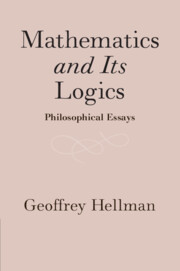Book contents
- Mathematics and Its Logics
- Mathematics and Its Logics
- Copyright page
- Contents
- Acknowledgements
- Introduction
- Part I Structuralism, Extendability, and Nominalism
- 1 Structuralism without Structures
- 2 What Is Categorical Structuralism?
- 3 On the Significance of the Burali-Forti Paradox
- 4 Extending the Iterative Conception of Set: A Height-Potentialist Perspective
- 5 On Nominalism
- 6 Maoist Mathematics?
- Part II Predicative Mathematics and Beyond
- Part III Logics of Mathematics
- Index
- References
4 - Extending the Iterative Conception of Set: A Height-Potentialist Perspective
from Part I - Structuralism, Extendability, and Nominalism
Published online by Cambridge University Press: 26 January 2021
- Mathematics and Its Logics
- Mathematics and Its Logics
- Copyright page
- Contents
- Acknowledgements
- Introduction
- Part I Structuralism, Extendability, and Nominalism
- 1 Structuralism without Structures
- 2 What Is Categorical Structuralism?
- 3 On the Significance of the Burali-Forti Paradox
- 4 Extending the Iterative Conception of Set: A Height-Potentialist Perspective
- 5 On Nominalism
- 6 Maoist Mathematics?
- Part II Predicative Mathematics and Beyond
- Part III Logics of Mathematics
- Index
- References
Summary
After reviewing shortcomings of Boolos’ presentation of the “Iterative conception of set,” we formulate simple axioms on “stages” of set formation, using modal logic and the logic of plurals, that imply both the Axiom of Infinity and the Axiom of Replacement. (Two routes to these results are presented, the second less open to charges of circularity than the first.) We then present two other advantages of the Height-Potentialist framework, pertaining to motivating the smallest large cardinals (strongly inaccessible and Mahlo), and to furnishing attractive resolutions of the set-theoretic paradoxes. Our routes to these results are not available from within the Height-Actualist framework.
- Type
- Chapter
- Information
- Mathematics and Its LogicsPhilosophical Essays, pp. 61 - 73Publisher: Cambridge University PressPrint publication year: 2021



